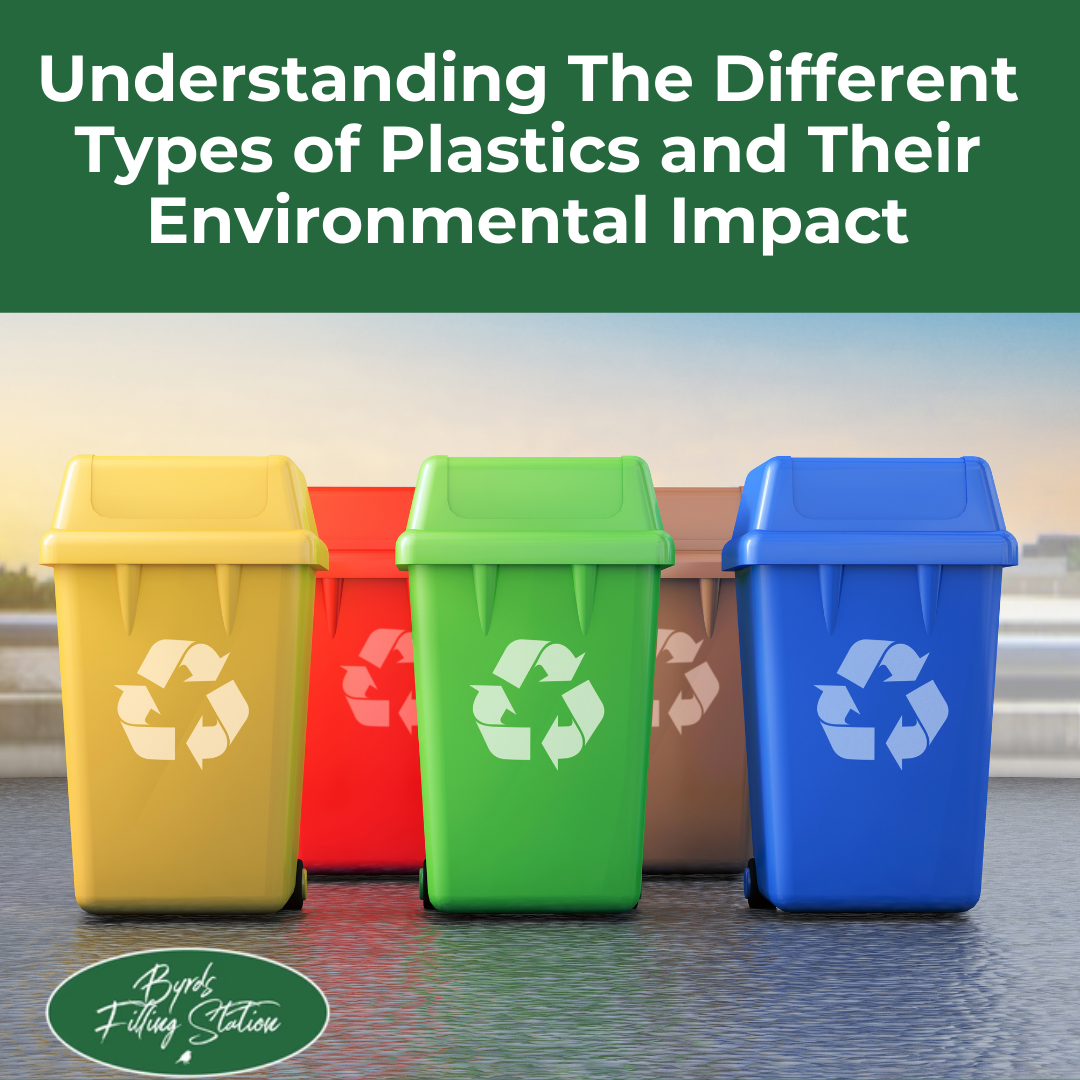Plastics are ubiquitous in our modern world. It's time to face the harsh realities of their environmental impact. Virtually all plastics are made with fossil fuels, so the production of any of the materials below already carries a heavy footprint from the fracking and drilling required to get the raw materials! Plastics are convenient, but their environmental harm is far greater. Here is a list of common plastics and their effects on the environment.
-
Polyethylene Terephthalate (PET -TYPE 1): PET is found in food and water containers. It may preserve food but contributes to the mountain of waste that plagues our planet. The majority of PET products are one-use only, resulting in colossal amounts of waste that don't make it to the recycling bin.
-
High-Density polyethylene (HDPE - TYPE 2): . While HDPE is a recyclable product, it's sad to say that a large portion of the material ends up in landfills and adds to the toxic non-biodegradable pile. These plastics are often coated with PFAS (carcinogenic “forever chemicals”) that seeps into our products and our food.
-
Polyvinyl chloride (PVC - TYPE 3): PVC is used in pipes for plumbing and toys for children, but its impact on the environment is not reflected. PVC is notorious for being impossible to recycle, and it's also laden with toxic additives.
-
Low-Density Polyethylene (LDPE - TYPE 4): LDPE is the material used to make plastic bags for groceries and cling film. Although it is convenient, its recycling can be problematic. This leads to the accumulation of plastic in the environment where it poses a danger to wildlife and ecosystems.
-
Polypropylene (PP - TYPE 5): : A durable and heat-resistant material, PP is used to make rope and yogurt containers. Its strength, however, means that it remains in the environment and contributes to long-term pollution.
-
Polystyrene (PS - TYPE 6) : The foam in your coffee cup and the take-out containers for food may be made of polystyrene. It may be cheap, but it's not good for the environment. As it breaks down, microplastics are created that are almost impossible to remove.Starbucks lids are also made of Polystyrene, just not "foamed" versions. It's highly toxic and leachable when exposed to heat... yet another reason to take your own cup!
- Other Plastics, including Polycarbonates (TYPE 7): : These plastics, which are used in eyeglass lenses and DVDs, are diverse and rarely recycled. They can also contain BPA, a chemical industrial that is associated with concerns about health, or other BPx compounds.
In reality, only about 5% of all plastics is recycled. The rest ends up littering our environment. The pollution is increasing as we continue to produce and dispose of more plastic each year. These wastes have become monuments on our lands and in the oceans, and wildlife is suffering as a result. Also 99% of plastics are made with fossil fuels.
Byrd's Filling Station is aware of the urgency and offers sustainable alternatives, such as refillable containers to replace disposable plastics. This is a commitment to turn the page on our dependence on disposable plastics, and write a new chapter in our environmental history.

